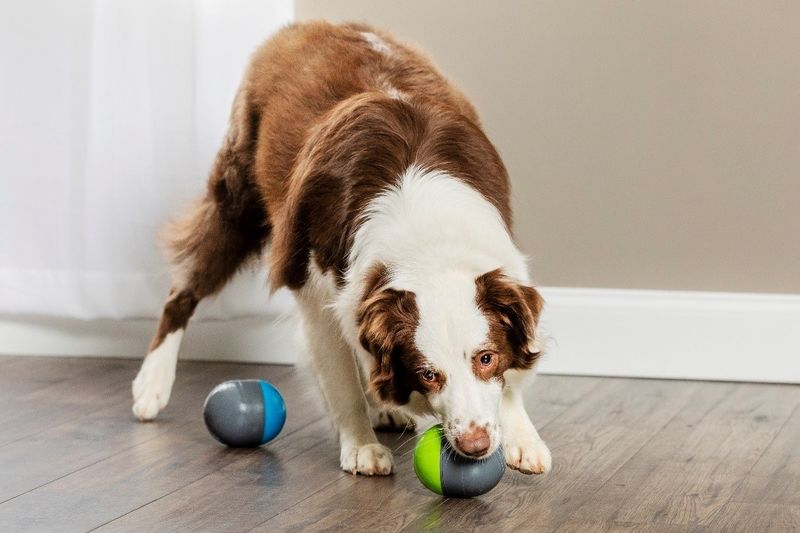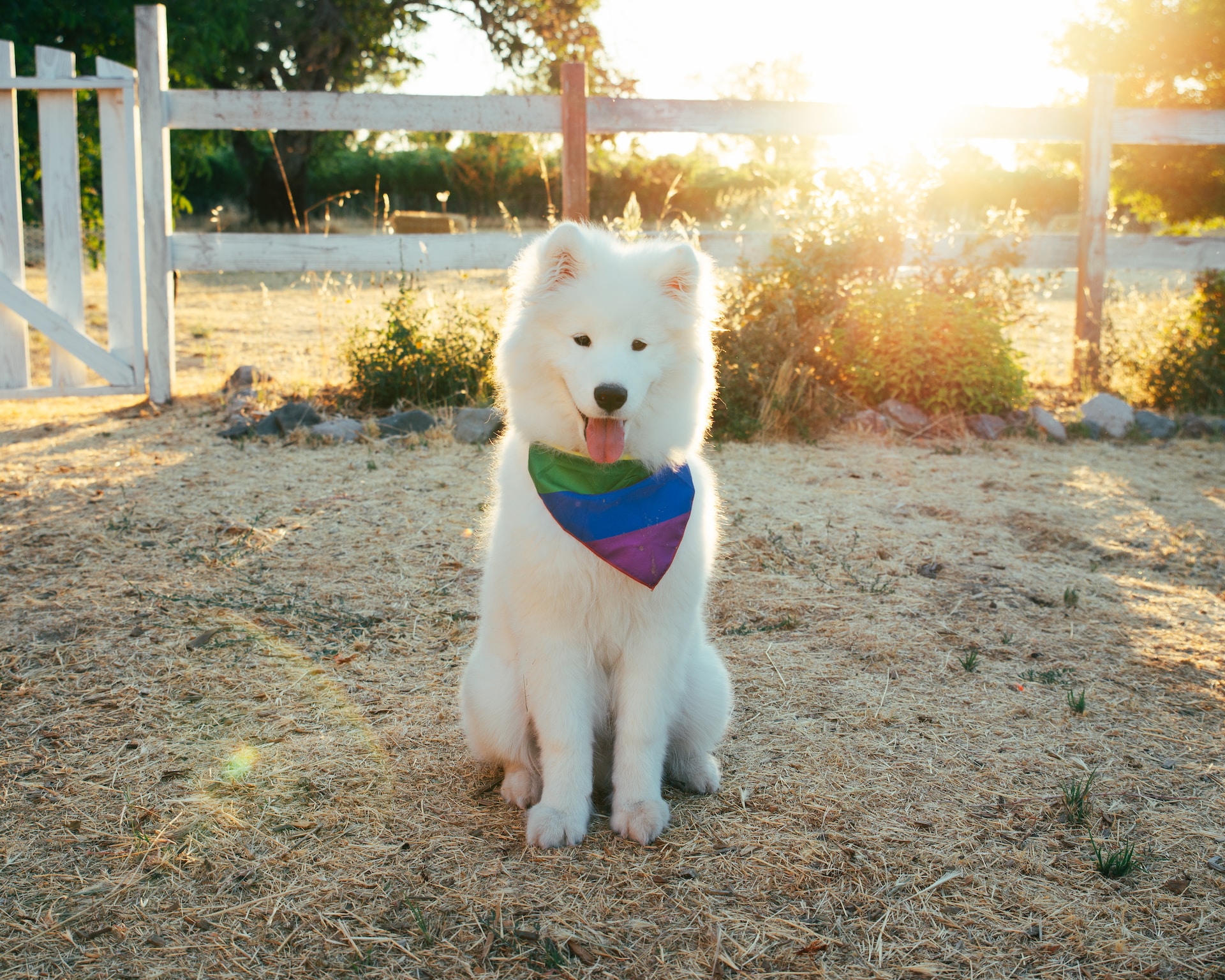- What Is the Definition of Service Animals?
- Can Cats Also Become Service Animals?
- Cats as Emotional Support Animals
- How to Turn Your Cat into an Emotional Support Animal?
- Cats as Therapy Animals
- Animal-Assisted Therapy (AAT) & Animal-Assisted Activities Therapy (AAAT)
- How to Turn Your Cat into a Therapy Animal?
- What Cat Breeds Are Considered the Friendliest?
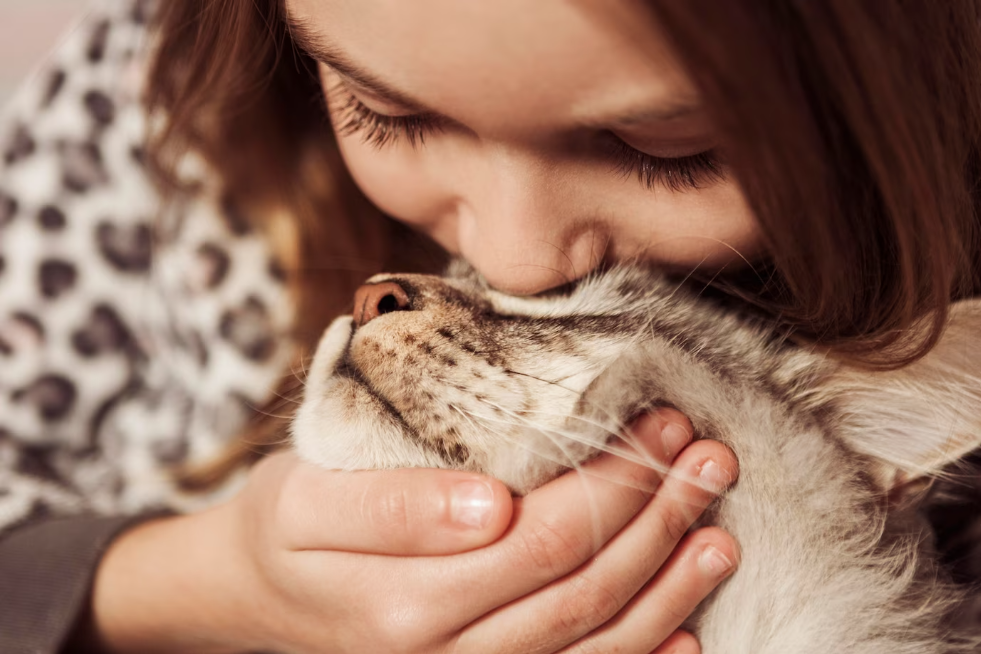
Probably most of you, who are reading this article, are either cat parents, or describe yourself as “cat people”. Cats, regardless of their reputation for being independent and emotionally distant creatures, can just like dogs, strongly attach and get attuned to their owners. They are affectionate toward their beloved humans and some of them even tend to become clingy.
Considering the strong bond that cats can develop with humans, and the support they can provide, we may wonder whether we can turn them into assistance animals or not…
Service animals provide tremendous assistance to many disabled people worldwide and turn into their most loving, loyal, and supportive companions. Can cats also be trained as service animals or is this role exclusively reserved for dogs? Let’s find out!
What Is the Definition of Service Animals?
The Americans with Disabilities (ADA) defines “service animals” as dogs who have been individually trained to perform specific tasks directly related to a physical and/or mental disability. Service animals are perceived as medical aid and not pets, and are entitled to access rights to all areas open for use by the public. Miniature horses are also recognized as service animals in several U.S. states.
Can Cats Also Become Service Animals?
Unfortunately not... Your feline friend can of course still provide you with love, comfort, and companionship, and help you feel better.
Some people may have even tried to train their cats in specific tasks that help them in their daily life. By laying in their owner’s lap and using the warmth and weight of their body, a cat can provide Deep Pressure Therapy, which is a common task for Psychiatric Service Dogs. However, even if this is the case, your feline friends won’t be considered service animals.
Dogs have proved reliable supporters, that are trainable, intelligent, and people-oriented. This statement does not apply to all dogs of course, as they are individuals and their temperaments vary from dog to dog.
The same is valid for cats- they have their own temperaments and personalities, and we can not categorize them all as “reliable” or “unreliable”. However, cats’ instincts are known to be much closer to their wild ancestors compared to dogs. This might be one of the reasons for their “exclusion” from the group of service animals.
We also shouldn’t forget, that cats are rather independent thinkers and their problem-solving skills are their strength. Dogs, on the other hand, are known as trainable and socially intelligent.
Having said that, does it mean that cats can not become support animals at all? No, it does not!
Cats as Emotional Support Animals
As the name implies, the role of Emotional Support Animals (ESAs) is to provide comfort, and emotionally support their owners by being by their side. ESAs do not go through specialized training and do not perform specific tasks, directly related to a disability. However, their presence has proven very rewarding for the mental health of their owners.
A cat as an ESA can be of great emotional help to their owner.
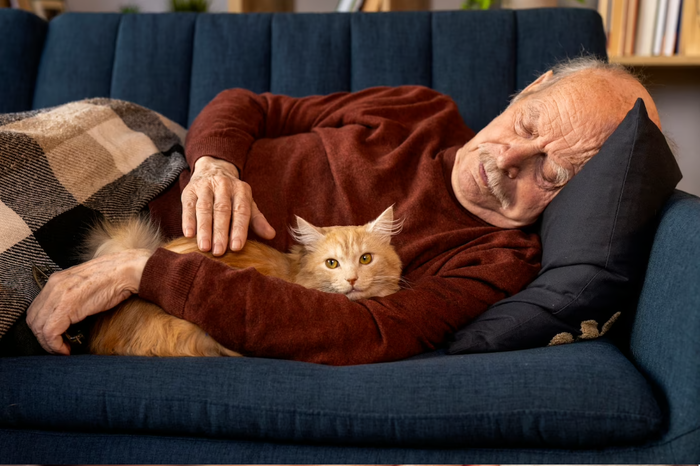
How to Turn Your Cat into an Emotional Support Animal?
If your cat is well-behaved, responsive to you, and helps you feel calmer, happier, and loved, then it is likely that they already function as an Emotional Support Cat. If they are not, then you will need to train your cat in good manners and basic obedience.
Consulting with a licensed mental health professional is an essential part of the process of turning a pet into an ESA. Consultation is needed, so that you can be provided with a medical letter, that verifies your need for an Emotional Support Animal.
An ESA letter is not supposed to disclose any details related to your disability, but rather include a statement by a mental practitioner. This statement should make clear the fact, that the medical practitioner is aware of your diagnosis and that an ESA can be rewarding for your treatment.
Cats as Therapy Animals
Therapy animals, same as Emotional Support Animals, are a type of companion animals. They provide comfort and companionship and help people feel better. The main difference between the two types of animals is that ESAs support one person only, while TAs provide comfort to many people. The main goal of therapy animals is to help people in designated facilities like hospitals, schools, and nursing homes go through recovery therapy or medical treatment more quickly.
The presence of a therapy animal can greatly benefit the motor, cognitive, learning, and social skills of a person. Usually, therapy animals are accompanied by a handler (this is the owner in most cases) when they go visit patients, students, or residents. There is also a third party (a medical professional) that supervises the interaction between the therapy team and the individual(s).
Although dogs are more commonly used as therapy animals, cats have also proved their great skills in providing comfort to people! Both therapy dogs and therapy cats benefit a lot of people who are going through recovery.
It is important to note though that other animal species such as guinea pigs, rabbits, birds, etc. can also become therapy animals.
Animal-Assisted Therapy (AAT) & Animal-Assisted Activities Therapy (AAAT)
In their role as Therapy Animals, cats can be included in different types of pet therapy programs.
Animal-Assisted Therapy and Animal-Assisted Activities Therapy are two terms that often appear when we talk about animal-related therapy programs. Although both feature the use of animals for therapeutic purposes, there are some noticeable differences between them.
The main goal of AAT is aimed at achieving specific therapeutic goals, i.e. reducing anxiety and improving mood, and communication skills.
In contrast, AAAT is more focused on providing opportunities for socialization, recreation, and leisure activities.
Another essential difference can be found in the setting where the two types of therapy are provided.
While AAT usually takes place in a clinical setting, such as a hospital or therapy office, AAAT is typically provided in community settings such as rehabilitation centers, schools, or nursing homes.
Last but not least, AAT usually involves licensed healthcare professionals, while AAAT is provided by volunteers.
If we have to put it simple- AAAT includes a wider range of interventions and is not so strict, while AAT is more goal-oriented, and thus the process is stricter.
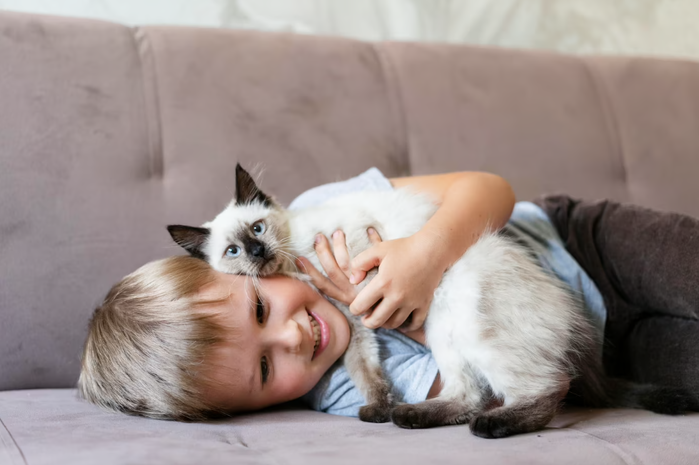
How to Turn Your Cat into a Therapy Animal?
There are usually minimum requirements that therapy animals have to meet. For instance, they need to be calm, friendly, and obedient and not show any signs of aggression.
As mentioned above, if you have decided to make your cat a therapy cat, please make sure first, that your feline friend is people-oriented and calm around other animals and people. Basic obedience training may be needed. You should always keep in mind that not all animals have the temperament for the job.
Of course, therapy animals must be healthy and up-to-date with all the needed vaccinations.
Every facility runs its policy in regard to therapy teams and what requirements they need to meet to be entitled to access for therapeutic purposes. In some cases, the additional requirements may be related to the minimum or maximum age of the animal.
Also, being certified as a therapy animal is a requirement many facilities are likely to have. By proving that your paw friend has gone through a training program, you will guarantee the safety of the individuals in the setting, as well as your cat’s safety. Not to mention, this will ensure that no damage will be caused while you and your feline friend are on the premise. The type of training program that will be accepted varies from facility to facility, so you need to check that.
Being spayed/neutered, being kept on a certain diet, or living together with the handler for a certain period of time are also requirements your cat may need to meet.
What Cat Breeds Are Considered the Friendliest?
Before we list some cat breeds which are considered friendliest, we would like to note that it is all individual and depends on the animal’s personality.
Maine Coon
These gorgeous giant long-haired cats may look a bit scary, but they are actually very gentle, friendly, and sociable. They enjoy spending time with their owners and playing fun games.
Ragdoll
Ragdolls are known as calm, social, and gentle cats, who develop a strong bond with their owners and have almost dog alike personalities.
Siamese
The representatives of this breed are known for being intelligent and affectionate. They often form strong bonds with their owners and enjoy spending time with them.
Persian
Persians are known for their docile and affectionate nature and love of relaxing. If you are a proud owner of a Persian cat, then you probably enjoy spending time petting and cuddling with your fluffy feline friend.
Sphynx
The Sphynx is a cat breed that many people do not perceive as physically “cute”. However, these cats are very social and affectionate, and they often seek out human company. They are also intelligent and playful, which makes them great companions.





